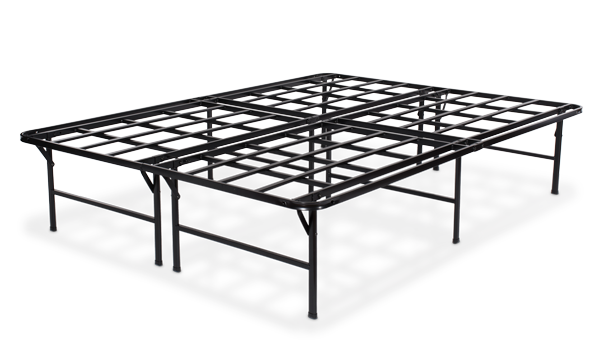Raising your bed frame can provide numerous benefits, from improving aesthetics and comfort to maximizing under-bed storage space. In this comprehensive guide, we'll walk you through the process of raising your bed frame, as well as offer tips for safely moving it to a new location. With our expert advice, you can elevate your sleep space and create a more functional, stylish, and comfortable bedroom.
Why Raise a Bed Frame?
Improved Aesthetics and Comfort
A higher bed frame can give your bedroom a more polished and sophisticated appearance. Additionally, raising your bed can make it more comfortable to get in and out of, particularly for taller individuals or those with mobility issues.
Increased Storage Space
One of the most significant benefits of raising a bed frame is the potential for increased under-bed storage. By elevating your bed, you can create additional space for storage containers, drawers, or even built-in shelving units, allowing you to maximize your bedroom's functionality.
How to Raise a Bed Frame
Bed Risers
One of the simplest and most cost-effective ways to raise a bed frame is by using bed risers. These small, sturdy platforms are designed to fit under each leg of your bed frame, lifting it to a higher position. Bed risers come in various heights and materials, such as wood, plastic, or metal, and can be easily found at home improvement stores or online retailers.
To use bed risers:
- Remove your bedding and mattress from the bed frame.
- Enlist the help of a friend or family member to lift one corner of the bed frame.
- Place the bed riser under the lifted leg, ensuring it's centered and secure.
- Repeat the process for the remaining legs of the bed frame.
- Replace your mattress and bedding and enjoy your elevated sleep space!
Adjustable Bed Frame
If you're in the market for a new bed frame, consider investing in an adjustable model with built-in height options. These bed frames typically feature multiple leg settings or extensions, allowing you to customize the height of your bed to your preference.
Custom Bed Frame Modification
For a more permanent solution, you can also modify your existing bed frame by extending its legs or adding taller support posts. This option may require some woodworking or metalworking skills, as well as access to tools and materials. If you're not confident in your abilities, consider consulting a professional carpenter or furniture builder for assistance.
How to Move a Bed Frame
Disassemble the Bed Frame
Before moving your bed frame, you'll need to disassemble it into smaller, more manageable components. Start by removing your bedding and mattress, then proceed to disassemble the frame according to the manufacturer's instructions. Be sure to keep track of all hardware, such as screws, bolts, and brackets, to make reassembly easier.
Protect Your Bed Frame and Surroundings
When moving your bed frame, it's essential to protect both the frame itself and your surroundings from damage. Wrap the disassembled components in moving blankets, bubble wrap, or furniture pads to prevent scratches, dents, or other damage during transport. Additionally, use caution when maneuvering the bed frame through doorways, hallways, and stairwells to avoid damaging your walls and floors.
Enlist Help and Use Proper Lifting Techniques
Moving a bed frame can be a physically demanding task, so it's crucial to enlist the help of friends, family members, or professional movers to assist you. When lifting and carrying the bed frame components, always use proper lifting techniques to avoid injury. This includes bending at the knees, keeping a straight back, and lifting with your legs rather than your back. Work as a team to distribute the weight evenly and communicate clearly to ensure a smooth and safe moving process.
Reassemble Your Bed Frame in the New Location
Once you've successfully moved your bed frame to its new location, carefully reassemble it according to the manufacturer's instructions. Ensure that all hardware is securely tightened and that the frame is stable and level before placing your mattress and bedding back on top.
Conclusion
Raising your bed frame can enhance both the comfort and functionality of your sleep space, while also providing the added bonus of extra storage. With our expert tips and tricks, you can safely elevate your bed frame and reap the benefits of a more stylish and practical bedroom.
Additionally, our guide on moving your bed frame will ensure that your sleep sanctuary arrives at its new destination in pristine condition, ready for a peaceful night's rest. Happy elevating and moving!

- Supports up to 1,000 lbs.
- Easy assembly.
- Lifetime warranty.
- 101-night sleep trial.
- Free shipping and returns.












